‘The shock and thrill of discovering this book, aged 13, continues to run in my veins’ … On the bicentenary of Charlotte Brontë’s birth, writers and artists reflect on her greatest creation
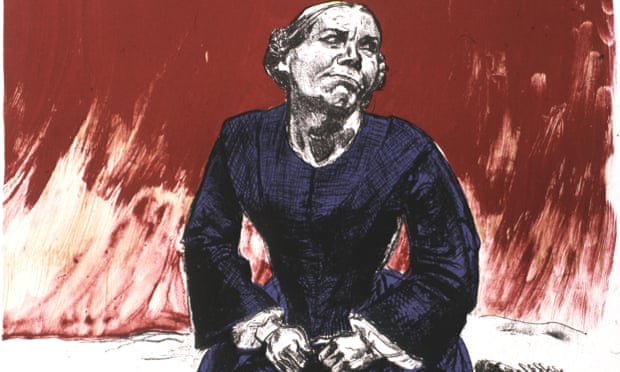
Come to Me by Paula Rego. Jane Eyre in later life being called for by the blind Mr Rochester.

Sarah Waters
I first read Jane Eyre as a teenager, but have returned to it many times since; it is one of those novels that, with each rereading, only seems to grow richer. My favourite lines come just over halfway through, when Jane is engaged in one of her many wrangles with the teasing Mr Rochester. “Do you think,” she asks him, “because I am poor, obscure, plain, and little, I am soulless and heartless? You think wrong!” The lines capture part of the appeal that the book has always had for me: the small, unglamorous, passionate figure staking her claim to equality, insisting on her right to feel, to act, to matter. Meanwhile, however, up on “the fateful third storey” of Thornfield Hall, the inconvenient first wife gives her “goblin ha! ha!” … What I love most about Jane Eyre is the way it combines vastly different narrative registers, with mad Bertha Rochester prowling just below the realist surface and occasionally erupting though it to start a fire, bite a shoulder or rend a wedding veil. With her, Brontë created the sort of gothic icon – like Dracula or Mr Hyde – that it is now hard to imagine the world ever having been without. Just like Jane herself, Bertha lives on in many forms – and gets her own story, of course, in another inspiring novel, Jean Rhys’s prequel to Jane Eyre, a brilliant bit of post-colonial revisionism Wide Sargasso Sea.
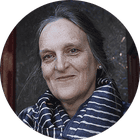
Tessa Hadley
Jane Eyre is so built into the shape of my imagination that I can hardly think about it critically; I’m always in among its trees – the sturdy, northern, low-growing hawthorn and hazel bushes of its terrain – and can’t dispassionately estimate the size of the wood. The novel touches not one responsive note in me, but a whole sequence of them, each quite distinct. There’s the little girl Jane, reading and dreaming in her window seat behind the drawn curtain, looking through the glass at the dreary November afternoon outside. There’s Jane the governess at Thornfield, knowing she ought to be grateful because she is employed and fed and sheltered, yet still divinely discontented.“Anybody may blame me who likes … I longed for a power of vision which might overpass that limit.” There’s Jane after she has inherited her fortune, joyously and fervidly domestic, cleaning down Moor House from chamber to cellar, getting ready for Christmas. And then there’s the dreamlike reconciliation with Rochester at the end of the novel, dark with the “small, penetrating rain” of overgrown Ferndean.
I do have my reservations; I’ve never been able to believe in Mr Rochester and his ponderous teasing courtship, no matter how hard I try. I don’t think Charlotte Brontë had met enough worldly men – he sounds like an unworldly woman’s idea of one. But the novel entrances me, literally – there are any number of passages that induce a submission in me that goes beyond critical appreciation: they have a dream-like power. Its symbolism, woven into the textures of its realism, transports me each time to the familiar ritual place, with its secret life that doesn’t fail. The morning after Jane’s coming together with Rochester in the orchard at Thornfield, “the great horse chestnut at the bottom of the orchard had been struck by lightning in the night, and half of it split away”.
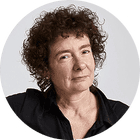
Jeanette Winterson
We didn’t have books at home except for the Bible and books about the Bible. But Mrs Winterson, my mother, must have been well read at one time because she decided to read Jane Eyre to me when I was seven. Jane Eyre was deemed suitable because it has a minister in it, St John Rivers, who is keen on missionary work. There is the terrible fire at Thornfield Hall and poor Mr Rochester goes blind, but Jane doesn’t bother about her now sightless paramour; she marries St John Rivers and they go off together to the mission field. My mother read out loud, turning the pages and inventing the text extempore in the style of Brontë. Only years later, reading it for myself, did I discover what she had done. It was an invaluable lesson for a writer; no story is the final one.
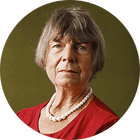
Margaret Drabble
I remember being gripped by two aspects when I first read Jane Eyre at the age of 10 or 11 – the horrible school at Lowood and the mad woman in the attic. The Lowood episode is the most frightening boarding school story ever written, and, of course, all children, me included, think they are friendless, persecuted and despised, and identify with the poor orphan. The meals of burned porridge were nearly as bad as the processed peas and gristle stew of Sheffield girls’ high. I don’t know why the fate of Bertha Mason simultaneously attracted and terrified me so much, but it did. I don’t think it was for protofeminist reasons: it was more a fear of fire and madness, though its subliminal power was obvious even to a child. As an adolescent, I suppose I became more interested in the love affair, though by then I had read Wuthering Heights and much preferred Heathcliff to Rochester, and the fairytale wish-fulfilment elements in Jane Eyre I already found annoying and disturbing. On rereading in old age, I now find the arch, self-righteous and implausible dialogues between Jane and Rochester boring: they serve to remind one that Villette is a much greater work. Maybe I prefer tragedy to romance. But I do now find the St John theme of temptation-to-virtue more resonant than I did, and Brontë’s dreams of red room wombs and lost babies are very powerful. Also, I do now see more clearly why she shocked her contemporaries so much: Matthew Arnold was right when he said she was full of “hunger, rebellion and rage”. Jane does not even attempt to hide her greed and need for love. It is painful to read of her longings, and even more painful to know they were never to be satisfied.

Esther Freud
I was 14 or 15 and living on the top floor of a communal house in a small village in Sussex when I first read Jane Eyre. It was the most romantic book I’d come across, and it ignited in me the idea – surely already smouldering – that there was someone out there who would see the grand heroine that was really me, and not the “small, plain” person I presented. I had a bedroom with a balcony that looked out over a large terraced garden, and I used to lean over it and see if I could catch sight of the current object of my affections, a married man who lived on the ground floor, with whom I was carrying on a romance of epic proportions, fuelled only by an occasional glance in my direction, the offer of a lift to the next village and, once, the soulful handing over of a flower. I found out later that he was in fact having an affair with the woman who rented two rooms on either side of the front door, and although in that instance – and, sadly, in many others – my intuition was out, it was Jane Eyre’s psychic ability to know when she was being called to that has stayed with me most profoundly. When I next read the book, and recently, while listening to Rachel Joyce’s luminous adaptation on the radio, I was struck by the extraordinary directness with which Rochester and Jane communicate. It thrills me, as it must have thrilled readers in 1847, how their talk transcends convention – cutting through politeness, forcing an intimacy that leaves them reeling, altered.
“Your smile did not strike my heart for nothing,” Rochester tells Jane when she saves him from the fire, and then, noticing she is shivering with cold and shock, he tells her she must go. But she can’t go. He still has hold of her hand. It is this yearning, this connection, this idea that there is something out there bigger than us, that makes so many readers – me among them – respond to Brontë’s masterpiece so powerfully.

Andrew Motion
I knew about Jane Eyre for a long time before I read it. Handsome Mr Rochester with his gothic dash and flair, plain Jane with her habit of lurking in window seats; it was an archetype of one kind of love affair, and in its way more sympathetic than the more glamorous coupling of Heathcliff and Cathy. More sympathetic because more encouraging to an adolescent (regardless of their gender) with low self-esteem. Then there was the mad woman in the attic. Didn’t all homes have such a creature – even when there was no attic and no lunatic – in the sense that the attic was a head space as well as a room space, in which invisible injustices and wildness were stored, ready to burst into the world and create havoc at any moment?
I expect I saw a film version too, which would have reinforced all these impressions. But the book itself … I didn’t read it until I went to work at the University of Hull in 1976 when I was 23 and found that I had to teach it. Although I still feel embarrassed to have arrived at the table too late, I comfort myself by thinking that at least I was more or less ready for it.
Ready, in particular, for something I’d not previously known about. Which is Brontë’s very clever meshing of a plausibly rendered world (and I could easily see how well rendered by visiting Haworth from Hull), with a world that is pretty much pure fantasy. I don’t just mean fantasy in terms of those gothic elements, but in the bending of hard facts (the contemporary laws of the land) to bring Jane to her eventual reward. In this respect, the book is truthful about cruelty (Bertha’s fate, especially), but it is also life-affirming. The central tension between actualities and make-believe anticipates the tragic plea at the end of Villette: “leave sunny imaginations hope”.
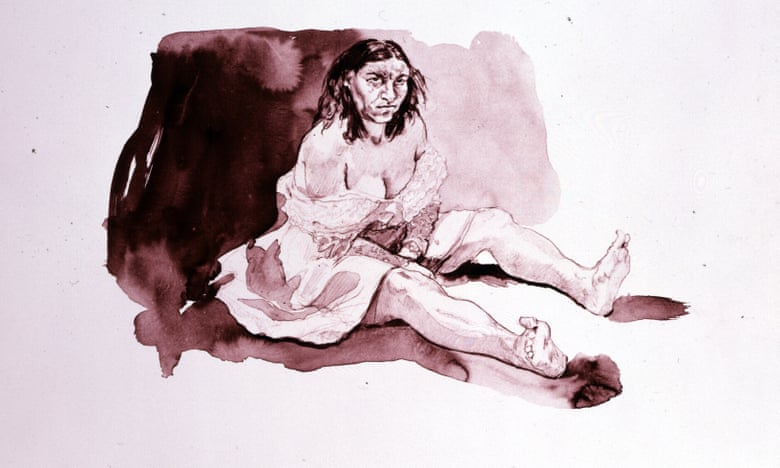

Maggie O’Farrell
Like many people, I first read Jane Eyre in my early teens, in the first flush of excitement at swapping my children’s library card for an adult one. The back cover promised a thrilling love story between a poor, plain girl and a brooding, troubled landowner. Later that night, I found myself wrong-footed. What, I wondered, was this neglect and abuse of an orphan child? Whose was this frank, unwavering voice? By the time Jane was locked by her heartless aunt into the terrifying red room, I had forgotten all about the promised love story. I pressed on, late into the night, straight into Lowood and the deprivations at the hands of religious fanatics.
I had, in short, never read anything like it. The shock and thrill of discovering this book, aged 13, continues to run in my veins. I read it without a single preconception; I knew nothing about it. I was as unprepared as those first Victorian readers for Rochester, for the fire, for the stalled marriage, for the lunatic locked away in the attic.
If Jane Eyre taught me anything as an astonished 13-year-old, it was to strive, to push my reach beyond my grasp, not to settle for compromise. When we studied the book at university, Brontë’s words were filtered for me through various frameworks of academic theory. Jane Eyre is a feminist novel, I was told. Or it is the link between the epistolary and the gothic novel. It is the precursor to all stream-of-consciousness writing. It is a psychological tract about doubles and doppelgangers, addressing levels of human consciousness. It is all these things and yet none of them. One of the reasons Jane Eyre continues to provoke so much discussion and theorising is that, like Jane herself, it eludes definition. It does one thing with its right hand while doing quite another with its left.
Thirty years on, I still haven’t read anything like it. Jane Eyre remains the book I return to the most. I read it every couple of years. Parts I know off by heart, yet each time I come away with something different. It is my datum, my pole star, the novel by which all others shall be measured.

Polly Samson
I read Wide Sargasso Sea before I ever got to Jane Eyre. It wasn’t until my youngest son was set Jane Eyre for A-level that I finally read it (I thought I had but it turned out I’d only osmosed it from the air and screen). Wide Sargasso Sea, I’d read several times. Reading them the wrong way round, which happens to be chronologically the right way round, does rather spoil the romance: leaving you alert to a morally derelict rather than a Byronic Rochester. Jane falls for a man whose degeneracy and sadism drove his first wife mad. Lushly erotic and deeply disturbing, Rhys’s book bleeds very darkly into Brontë’s.
And what of poor little Adèle, the abandoned child of his Parisian mistress? There he is, pampering her with cadeaux while referring to her repeatedly and within her hearing as “it”, and remarking on her stupidity. Why did he take her in if he despises her so? And then, Rhys whispers in your ear and you shudder to remember that in Wide Sargasso Sea Rochester has sex with a servant girl, who can’t have been more than a child.
And on to the spectacle of the mad woman in his attic: unkempt and ugly, raving and knifing and biting. Rhys won’t allow you to dismiss her as some sort of mythical vampyre, or even Jane’s rebellious alter ego. In Wide Sargasso Sea, she is a beautiful but fragile Creole heiress whom Rochester marries for her fortune, and on his honeymoon is already resenting for her “disconcertingly non-European” eyes.
It is never made clear in Jane Eyre from what form of madness the first Mrs Rochester is suffering. Something must have turned her from a beautiful bride into this swollen, purple monster. Given what Brontë tells us of his decade-long lost weekend, does it seem unlikely that Rochester has given her syphilis?
And then, up on the roof, among the flames of Thornfield Hall, Rochester loses his hand, his left hand, the one he gave in marriage. According to Jane Eyre, the woman he gave it to jumps, thus freeing him to marry Jane. Oh dear. Reader, I can’t help but think he pushed her.

Helen Dunmore
What I love most about Jane Eyre is the ferocity of her radicalism. She refuses to see the world as it tells her it should be seen. She will speak out, although she is a friendless nobody: small, pale, plain and female. From the first page there are hints of the fire that burns in her. Jane is out of favour, banished from the family hearth. She hides away in her own no man’s land, a window seat where she sits “cross-legged, like a Turk”, revelling in the pages of Bewick’s History of British Birds. A drawn red curtain conceals her from the room, while the glass protects her from “ceaseless rain sweeping away wildly from a long and lamentable blast”.
Jane Eyre is between two worlds and belongs in neither, although she will have to live in both during the course of the novel. She will be a beggar-maid, exposed on the moors, and a princess wooed by the King of Thornfield Hall, Mr Rochester. Neither will satisfy her. Jane’s quest is long and solitary, and she is protected only by her fiery spirit and incisive intelligence. But if Jane Eyre has fairytale and mythic qualities, she is also an intensely political creation. Jane genuinely does not believe that morality has anything to do with wealth, power or social standing. She repudiates the idea that women’s mental capacities are less than those of men. She would rather live alone than accept a relationship that compromises her independence. Strong stuff even in our times, but revolutionary in 1847. At 10 years old she castigates rich, powerful Mrs Reed for her hypocrisy and cruelty. At 18 she sets out into the world to support herself, having done everything possible to secure an education.
Her relationship with Mr Rochester is, to put it mildly, challenging. She will not be flattered: she must be an equal. Is Jane Eyre lovable? Perhaps not. She is intensely critical, and quick to scorn. There is no warmth of humour in her. She is elemental, with “rather a look of another world” as Rochester says, and yet at times extraordinarily prosaic. But if not lovable, she is utterly compelling. There was no one like Jane Eyre before she blazed on to the page, and into a million imaginations.

Blake Morrison
I grew up not many miles from Haworth, in a vicarage at the top of a village; my mother, like Patrick Brontë, had come from Ireland; the landscape we looked out on resembled the one Jane Eyre wanders through after fleeing Thornfield Hall: “[the roads] are all cut in the moor, and the heather grows wild and deep.” The novel wasn’t on the syllabus at my grammar school; no self-respecting teenage boy would have wanted to be seen with it. But the sense of recognition I felt when I read it was immense. All adolescents feel like victims, and the mistreatment of Jane in the early chapters, first by Mrs Reed then by Mr Brocklehurst, put me firmly on her side. I too knew what it was like to be humiliated in class (the slate-dropping episode) and to lose a close friend (as she does Helen Burns). I too distrusted wealth and finery. Never mind Jane’s gender: it was the two of us against the world! Whether Mr Rochester would prove worthy seemed doubtful. The romantic denouement engaged me less than the impediments along the way: Miss Ingram; mad Bertha (we too had a scary attic); the halting of the wedding ceremony. But I liked the teasing and banter, and there were ideas to grapple with, too, about class and work and beauty. Above all, there was Jane’s denunciation of female servitude. Women, she says, “need exercise for their faculties … they suffer from too rigid a restraint, too absolute a stagnation, precisely as men would suffer; and it is narrow-minded … to say they ought to confine themselves to making puddings”.A hundred and twenty years after the book came out, that idea still met occasional resistance, especially in laddish rural outposts. But Jane Eyre showed it was plain common sense. Soon we’d all be reading The Female Eunuch. But Charlotte Brontë led the way.
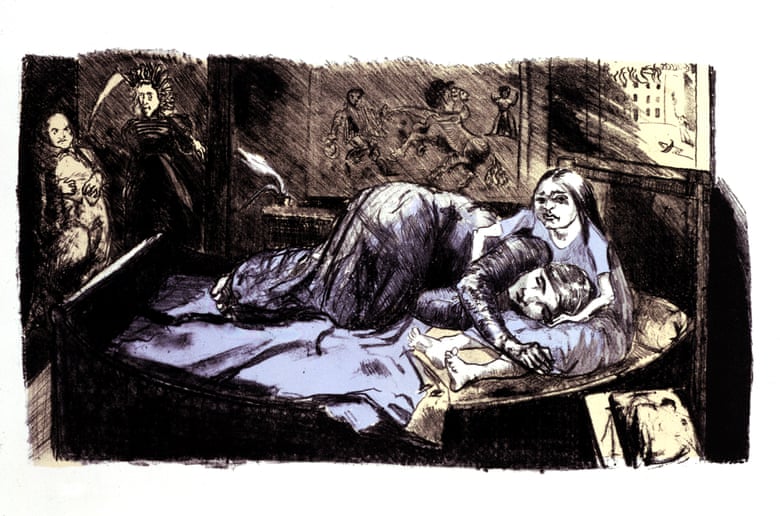
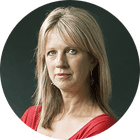
Julie Myerson
I first read Jane Eyre propped up in my little single bed with a shawl around my shoulders in a cold and creaking attic room at the top of a house in the middle of the starless Nottinghamshire countryside. The room, my old and once beloved bedroom, was badly lit, unheated, dusty and forlorn. It hadn’t always been so. But that summer our mother had left our father in a most spectacular fashion – at dead of night, taking half the furniture, all our pets and all three of us children with her. And my father vented his rage in the only way he knew how: by replacing nothing, leaving the house – and especially our bedrooms – to grow sad and dusty and unloved, a reminder each time we visited (fortnightly as the court decreed) of how our terrible mother had ruined our once “happy” family life.
I could not have wished for a better setting in which to get to know the Brontës. Charlotte, Emily, Anne – all of them kept me company in that cold and sad little room. I was 13 and I knew very little about anything, but suddenly here it all was: injustice and illness, death, shame, fear and secrecy – not to mention the possibility of love in unexpected or even inconvenient places.
I have read the novel since and always found something new to love. But my abiding sense of it then, as well as now, is of Jane herself – her sheer, steady-hearted goodness. Throughout the novel, from start to finish, she unwaveringly tells the truth. Such clarity and, in an odd way, such calm. It felt like something worth aspiring to. It still does.

Cornelia Parker
I identified strongly with Jane and her painful childhood when I first read Jane Eyre as a teenager as I was having quite a painful one myself (though perhaps not as bad as hers). So later in the book when she overcame her shyness, threw off her childhood problems and then became this incredibly strong woman, it was emotional and cathartic. I reread it in 2006 when on a residency at Haworth Parsonage. Back in London in the British Library I actually got to leaf through the original text, neatly written in three musty notebooks. She had obviously copied out the manuscript many times but this was her final draft, so seeing where she had deleted a single word here and there made the hairs on the back of my neck stand up. There were about 50 corrections in all, which I recorded through photographs: “crimson” was crossed out and replaced by “purple”; “soul” was changed to “spirit”, “glimpse” became “idea”. I also took images through an electron microscope of tiny punctures in Charlotte’s pincushion, holes that she made unconsciously when sewing, and of split ends in the little plait of Emily’s hair that had been kept after she died. The Brontës and their characters have attracted so much literary attention, been the subject of so many Hollywood films, it seemed appropriate to work with the seemingly inconsequential traces, the tiny little frictions of everyday life.
When my daughter read it at school a couple of years ago, it was touching to read out passages to one another. The book has stayed with me all my life and I was pleased that she loved it too.

John Mullan
I did not read Jane Eyre until I was in my 20s and fancied I was an educated judge of the means by which novels achieved their effects – but I still found it simply overpowering. The novel’s first readers, either appalled or enraptured, thought that they had never heard a narrative voice like Jane Eyre’s, so truculent and dissatisfied. And that voice is still the thing. Jane’s dissatisfaction is magnificent – a deep hunger for warmth and love, but even more for truth and freedom.
I love the book for refusing to trick you into loving it. Jane Eyre takes the reader into her confidence like no narrator before in English fiction, yet does so in order to correct you, or wrangle with you, or even admonish you. “Oh romantic reader, forgive me for telling the plain truth!” What daring! To invent a narrator who demands our intimacy but remains so intelligently suspicious of our sympathy. She will not charm us: so, though often sardonic, she is almost never humorous (“Do you never laugh, Miss Eyre?” asks Mr Rochester).
Above all, she is weirdly eloquent. I love her strange, elevated language, distilled from religious texts and literary romance – the Bible and Byron stirred together: “Something of vengeance I had tasted for the first time; as aromatic wine it seemed, on swallowing, warm and racy.” This is Jane recalling how, at 10 years old, she defeats her cruel Aunt Reed in dispute. As everywhere else in Jane Eyre, her highly wrought words make experience fresh and intense once again.

Helen Simpson
I was 10 when first I read Jane Eyre, thrilled that this heroine of a grown-up book was the same age as me, for the first 100 pages at least. The book itself was small, crimson, second-hand, its print fascinatingly spidery on very thin paper. I asked for another one like that when my 11th birthday came round and received a Brontë bargain bumper-pack. More than three inches thick and almost 3lbs in weight (I’ve just checked), three sisters for the price of one, it lumped Emily and Anne in with Charlotte.
Having said thank you, I returned discreetly to the little second-hand edition. The child heroine’s first-person centrality, her super-sensitivity to injustice and her impassioned yet powerless state all commanded my readerly identification. Jane and I were one as we defied Aunt Reed, rubbed our chilblains, revered Rasselas-reading Helen Burns, raged at the headband marked “Slattern”. Ah, the solace of Miss Temple’s seed cake! And how rousing were Jane’s regular Miltonic blasts against tyranny; though I find on recent rereading that she was not quite the revolutionary I took her for (domestic endearment and household joys are “the best things the world has”, she declares to refrigerator suitor St John Rivers somewhere in Jane Eyre’s remaining four-fifths). Even so, who could resist a novel where the heroine sets her course by the moral compass of Bunyan’s pilgrim while her passions blaze with Byronic ardour from beginning to end? I took it to heart when I was 10, and there it has stayed.

Polly Teale
When I reread Jane Eyre as an adult it was not the horror story I remembered, but a psychological drama of the most potent kind. Everyone and everything seemed larger than life, as if seen through the magnifying glass of Jane’s psyche, a reflection of her inner world. Like many others I was curious as to why Brontë had invented a madwoman locked in an attic to torment her heroine? I was intrigued by the mythic power of Bertha Mason, by Brontë’s repulsion and attraction to her own creation. Her danger and eroticism. Her terrifying rage. Why was Jane, a seemingly rational young woman, haunted by a vengeful she devil? (I was inspired to write my play After Mrs Rochester, about Jean Rhys, while adapting Jane Eyre for the theatre.)
Of course, the novel begins with another image of incarceration: another female locked up for breaking the rules. Jane Eyre is shut in the red room when, for the first time in her life, she allows her temper to erupt. Jane is told “God will strike you dead in the midst of one of your tantrums”. She is so terrified she loses consciousness. The message is clear: for a girl to express her passionate nature is to invite the severest of punishments. Jane must keep her fiery spirit locked away if she is to survive. Like Jane (and Brontë herself), I understood this fear of one’s own nature. A large part of the novel’s power lies in our knowledge of the passionate forbidden self that lurks beneath the controlled exterior of our heroine.
Although Brontë spent most of her life in a remote Yorkshire village, she longed to travel beyond the horizon of her restricted existence. She and her siblings read the travelogues at the back of their father’s newspaper, recycling them into fantastical stories. It is significant that Bertha is a foreigner. She comes from the world of Brontë’s imagination, from a land of tropical storms and hurricanes. She is both dangerous and exciting. She is passionate and sexual. She is angry and violent. The embodiment of everything that Jane, a Victorian woman, could never be. Is she, I wonder, everything that Brontë feared in herself and longed to express?

Samantha Ellis
The trouble is that I read Wuthering Heights first. I lost my heart to Cathy Earnshaw (and, to be truthful, to Heathcliff), and next to her passion, her wildness, her rage, Jane seemed dull. Why would I read about her stoically suffering at school, plodding through her teaching jobs and marrying her boss when I could rock out with my hairbrush microphone, pretending I was Kate Bush? I was banging on about this when we made the pilgrimage to the moors for my book How to Be a Heroine, and my best friend Emma made me reconsider. She argued that Jane was independent and principled, a woman who stayed true to herself, didn’t suffer fools and fought her way to a hard-won happy ending.
Reading Jane Eyre again as an adult was a revelation. I loved how Jane addressed me boldly from the first page, how she challenged the injustices of her aunt’s household (a place where books were used as weapons), how she raged at Rochester that “women feel just as men feel” and how she rejected her cousin’s passionless proposal, because she wanted love and she didn’t see why she shouldn’t get it. Plus, with Jane Eyre, you get two heroines in one: angry, misunderstood Bertha is much, much more than just a madwoman in the attic, and nothing in the novel is as powerful as her final moment, standing on the battlements of the house she has set fire to, “black hair … streaming against the flames”.
I am still grateful to Wuthering Heights for encouraging a shy and awkward teenager to be a little wild. I still find Rochester bullying and creepy. And I have started to see how much Charlotte owes to her little sister Anne, who got there first with her portrayal of a plain, poor governess, in Agnes Grey. I think I’ll be reading (and arguing about) Jane Eyre for the rest of my life.

Mick Jackson
I grew up not far from Haworth so we would spend the occasional day over there, trooping up and down the high street and creeping round the parsonage. When I was about 10 my parents took me to see an adaptation of Jane Eyre at the local cinema. I remember watching Jane breaking the ice on the water to wash in the morning and being made to stand on a stool with a sign around her neck, thinking, “What on earth are we doing watching this poor girl suffer? There’s a Bond movie on next door.” We had a Penguin edition of Jane Eyre around the house and by the time I finally picked it up, both the story and the author seemed quite familiar – along with the landscape, which was pretty much the one I saw when I stepped out of my front door.
It must have planted a seed of some sort. About 15 years ago I read an article about Haworth being such a popular destination for Japanese tourists that the signposts around the moors are in English and Japanese. On talking to some Japanese visitors I found out that Jane Eyre had been a set text at school and that the Joan Fontaine/Orson Welles adaptation had been on TV when they were growing up. Something about the gothic, romantic elements of Jane Eyre and Wuthering Heights seemed to appeal to them and had come to represent a certain idea of England/Englishness.
My novel, Yuki Chan in Brontë Country, grew out of those initial conversations: the idea of Haworth as a shrine town; of Charlotte’s shoes and locks of hair as sacred relics; and how the Brontës themselves have become characters in a mythology that is quite beyond their realm.

Joanna Briscoe
As a child given to reading on window seats, I was supremely lucky to come across Jane Eyre at the age of the protagonist: 10 when the novel begins. The heroine and inspiration for all of us who were also “obscure, plain and little”, Jane was my bookish soulmate with infinitely worse outsider status, providing fuel to every orphan fantasy that would explain my lot. Jane Eyre taught the young reader so much about suffering, about true friendship and love, and about courage. It demanded to be reread many times. To this day, I see Jane as one of the great heroines: she is utterly determined, while not given to flouncy foot stamping in the Scarlett O’Hara, Holly Golightly or Becky Sharp vein, yet more spirited in her integrity than Dorothea Brooke or Esther Summerson.
As a young adult, I deliberately used the novel to initiate weeping sessions in order to siphon off other griefs, and somehow, I now realise, absorbed the desire to marry complex protagonists with dark and twisted storytelling, the novel influencing me as both a writer and reader. Now that it is all less personal and I don’t find myself dreaming about my baronial hall catching fire, I regard it as a masterpiece of both entertainment and literature. As with Du Maurier’s Rebecca, it is clear why some critics regard it as overblown, but I interpret its more gothic elements as intensity rather than excess.

Linda Grant
My Everyman Library copy of Jane Eyre was awarded to me in 1965 when I was 14, and has a bookplate inside announcing that I was the winner of the Rosa Chambers prize for reading aloud (junior). The cover is stamped in gold with the school crest, a young helmeted woman in profile encircled by the motto Knowledge Is No More A Fountain Sealed. The edition dates from 1908 and had been last reprinted in 1963. This is the only copy of Jane Eyre that I have ever owned and the print size is now almost too small to read. The next time I read the novel will be on a Kindle.
My teenage understanding of it – that Reader, she married him – was based on that happy ending, that the heroine had landed the Byronic figure of Rochester. Yet I retained a sense of discomfort, that compared with Elizabeth Bennet or Emma Woodhouse I could not help but feel that she had been landed with damaged goods. Perhaps the note of quiet triumph in Jane’s voice as she announces that she has sealed the deal of marriage has a freight of darkness: Rochester recovers some of his sight but cannot read or write; he can just about make out the face of his son. Rereading many years later, I was extremely curious, as I hadn’t been then, about the figure of the mad first wife, the animal-like Bertha, all hair and grunts. In Rhys’s Wide Sargasso Sea I found the answer to Jane Eyre, that the pale figure glimpsed by Grace Poole had no idea what she was getting into. How perfect was her happiness really and how many couples tell the whole truth about their marriage? I can no longer read Brontë without Rhys.
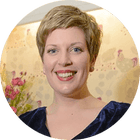
Sarah Perry
I first read Jane Eyre when I was eight, having mistaken it for a children’s book. I had found it on my sister’s shelves: a small hardback I recall perfectly, though I last saw it 20 years ago. The covers were glossy white, the paper thin, and there were illustrations throughout. The print was alarmingly small, but it appeared to be about a poor orphan packed off to boarding school before having adventures in a haunted house: all very appealing.
It is rare to be so affected by a book that one remembers exactly where and when one first read it, but I know that I knelt to read and from the first line – “There was no possibility of taking a walk that day” – was enthralled. Of course much of it passed me by – but I’d been raised on a rich and frequently indigestible diet of the King James Bible, and was used to breaking my teeth on hard sentences. What I understood, I understood with awe, amazement and absolute belief. I am certain it has formed my idea of all that is desirable in literature and life: the indomitable heroine concealing the heart of an eagle in the body of a sparrow; the tenderness of friends; the anguished tussle between love and honour; the strangeness and power of religion; the potency of the natural world; the danger of madness and deceit; the irresistible compulsion between a man and a woman who ought, really, to want nothing to do with each other.
It is years since I last read it, but certain phrases are as familiar and dear to me as holy writ; not least when I feel – as Jane so often felt – diminished, uncertain, torn between irreconcilable imperatives: “I am no bird; and no net ensnares me: I am a free human being with an independent will.”
• Reader, I Married Him: Stories Inspired by Jane Eyre, edited by Tracy Chevalier, is published by HarperCollins. Jane Eyre is reissued this month as a Vintage Classic.